This Lunar New Year Aligns with an Asian-American Cocktail Renaissance
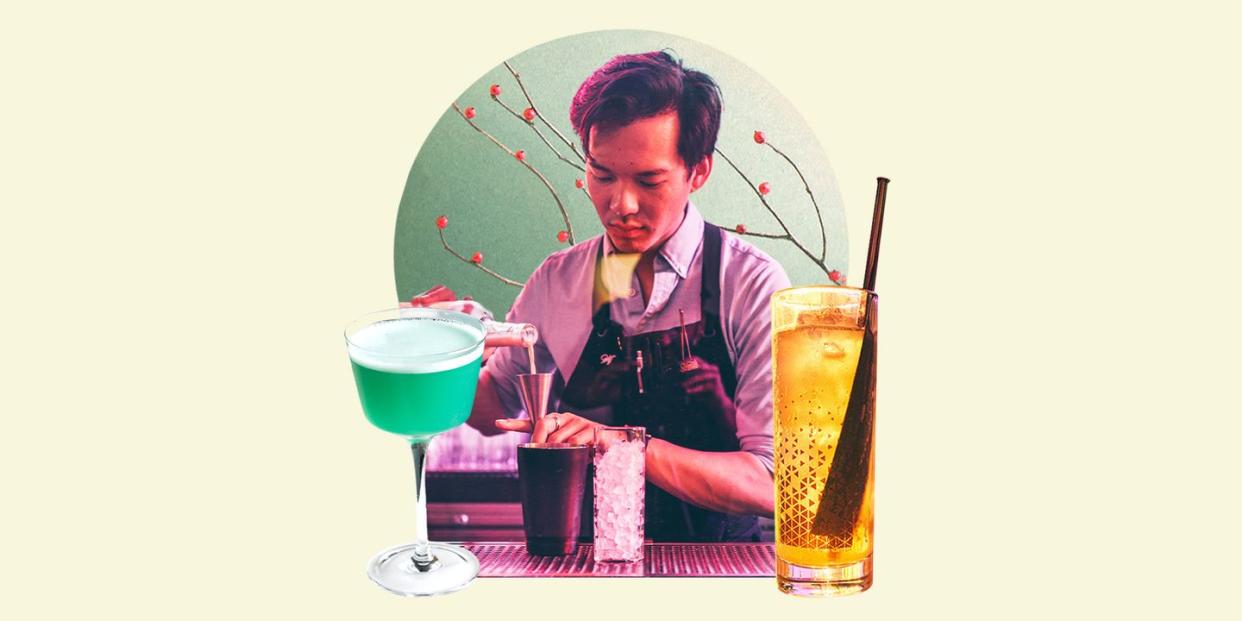
Caer Maiko Ferguson and Sharon Yeung, two bartending friends in Austin, threw a Lunar New Year party in 2019 with a goal of “super Asian cocktails” at their pop-up, Daijoubu. They served a banchan martini with MSG tincture and lemongrass shochu, a baijiu-and-sherry cocktail with fish sauce caramel, shots of a sake cocktail served in miniature Yakult bottles, and a frozen drink with rum, Darjeeling tea liquor, condensed milk, Adzuki beans, and Asian cookies. For starters.
“We wanted to create a space not based in speakeasy history, which is a very white American story,” says Ferguson over the phone from Austin as she preps for this year’s Lunar New Year. She is working on including a boba tea with bergamot liqueur-infused tapioca bubbles, her joy palpable: “I’ve never felt more like I was being myself.”
Daijoubu has big plans for the February 1 occasion, and it is not alone. All three bars at Las Vegas’s Venetian Resort are debuting specialty Lunar New Year cocktails. At Bar Chinois, in Washington, D.C., the Lunar New Year cocktail lineup includes a baijiu lavender gin fizz garnished with a hóngbāo (the holiday’s traditional red envelope). At Singapura, a Singapore-inspired bar in New York, it’s a baijiu cocktail with pineapple wedges. And at Viridian, in Oakland, a 60-foot silk dragon will hover over customers’ scotch drinks pierced with pandan-saffron soda.
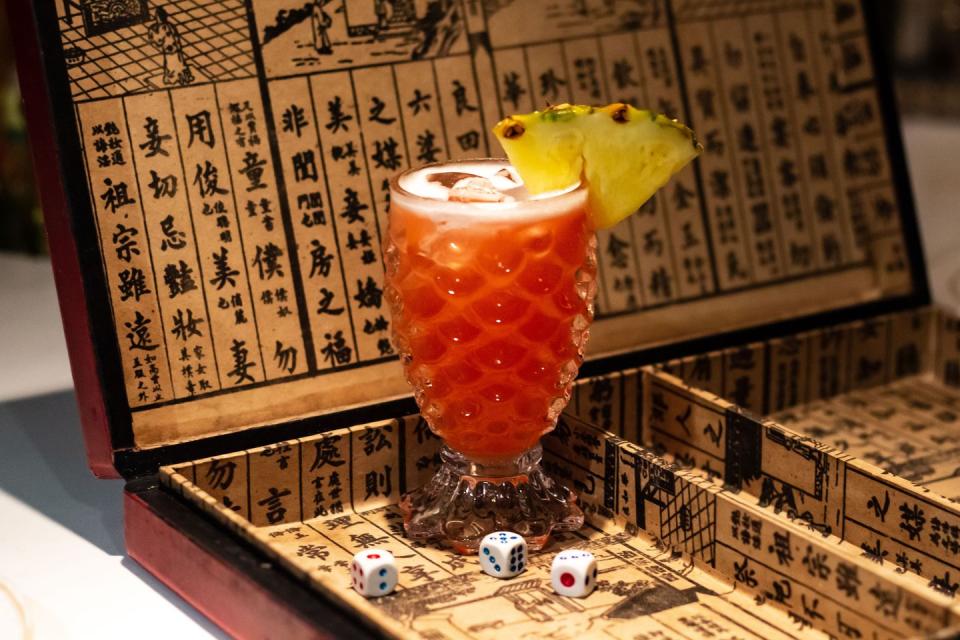
Acknowledging that Lunar New Year is celebrated broadly (Imlek in Indonesia, Seollal in South Korea, Tết in Vietnam, a multicultural festival in Singapore, etc.) these Lunar New Year-specific cocktail programs are the newest vanguard of a recent—and growing—renaissance among Asian-American bartenders nationwide. The trend reflects the global reality of cocktail culture, in which Asia was the most-represented continent among the World’s 50 Best Bars of 2021–holding 18 slots, six of which were in Singapore alone (compared to just three New York outposts, one of which was a Japanese bar). Even Eurocentric spirits are now anchored in Asia; The Philippines, for example, is the world’s largest per-capita consumer of gin.
Cocktails are Asia-centric now, which has massive implications for the $86 million U.S. cocktail market given its booming 23-million-strong Asian-American population. California is home to the world’s largest diasporas from Cambodia, South Korea, Laos, The Philippines, Taiwan, Vietnam, and Thailand (including the world’s first Thai Town, in Los Angeles). That’s not including the massive nationwide Chinese and Indian diasporas.
“The word ‘renaissance’ is a good one,” says Jack Tchen, a historian with expertise in anti-racism, “because, if you think of the Harlem Renaissance, it wasn’t just people trying to make money. Langston Hughes was not trying to make money. It was something far more meaningful. He was trying to create a new culture. He took the past seriously, history seriously, heritage seriously, but also the creativity of the moment, the community of the moment, and the future of that community seriously. That’s where American vibrancy becomes American potency. And that’s what’s going on now with these Asian-American mixologists.”
Nancy Yao Maasbach, president of the Museum of Chinese in America, agrees: “Now I get disappointed when I go in Asian restaurants and they haven’t gotten wind of it, y’know? It’s almost a mark that it’s a very traditional place that doesn’t know about the trend.”
The shift is cultural and even economic, but also personal, as a new wave of Asian Americans come of age.
Yeung encapsulates many Asian-American bartenders’ motivation: “My parents immigrated here and it’s the story you know: We came here with nothing and we want to raise you to be Americanized because that’ll be a better life for you, with less struggle. So for me, a lot of wanting to do this is to reach back into my heritage because I lost some of it being raised to be more American than I wanted. I didn’t want to lose as much Asian-ness as I did. So now I’m yearning for it constantly. This is who I am: take it or leave it. Even seeing other Asian bartenders doing something similar, it’s empowering like, wow, this can actually be a thing. We don’t have to be afraid of who we are.”
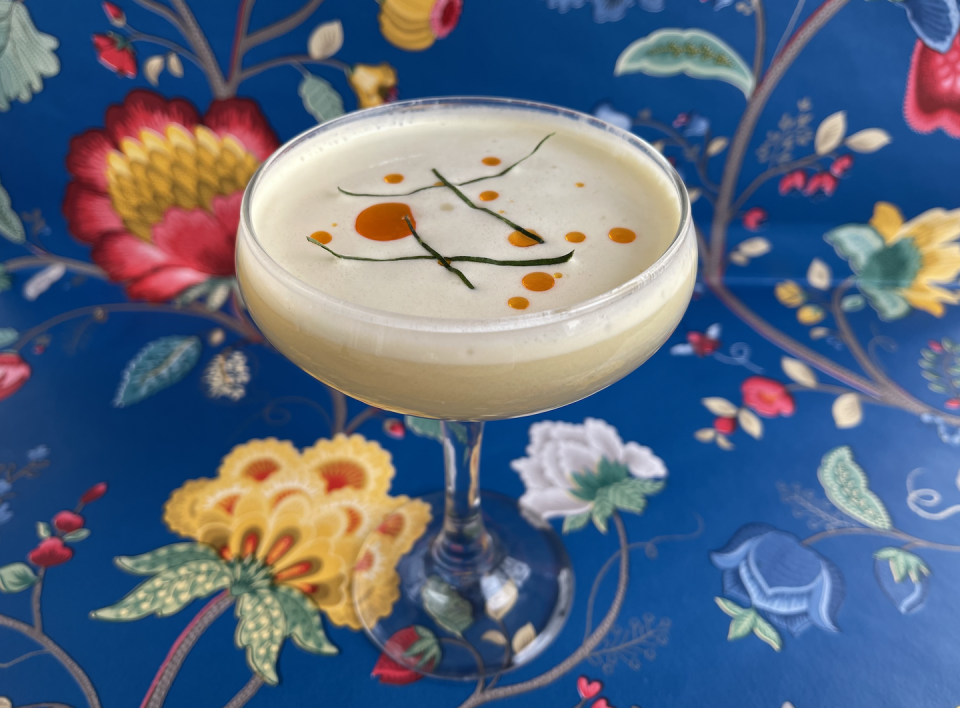
But Asian-American bartenders are leaning into their American-ness, too—not just their Asian-ness—with the gusto of their cheffing counterparts, and bringing the rest of the drinking population with them. This Asian-American renaissance, then, is not just about the next generation, but rather the next iteration. If BTS or Simu Liu or Kumail Nanjiani can change what a sex symbol can be, why can’t these bartenders change what a cocktail can be?
Take the shot of rye with phở aromatics and hot phở broth at Phở Bắc in Seattle. Or the coconut and chili oil swirling inside Fish Cheeks’ rummy Thank You Kha in New York. Or Prubechu’s Guamanian skewer of pickled bittermelon, turmeric daikon, rakkyo, and more in its jalapeño-and-wasabi sake-driven Bloody Mary with a kimchi rim in San Francisco. Hell, in New York, Undercote’s Purrrfect cocktail blends plum sake with catnip-infused vodka.
“It’s not that these voices are just emerging now,” says Ravi Kapur, owner at Good Good Culture Club, the newest extension of Liholiho Yacht Club’s heritage-driven menu in San Francisco. “The broader, dominant culture is now open to hearing the stories and the voices.” The ripple effect is subtle but strong. Take Starbucks, which has casually mainstreamed chai, dragonfruit, matcha, and now boba (which it calls “coffee popping pearls”).
The timing is perfect.
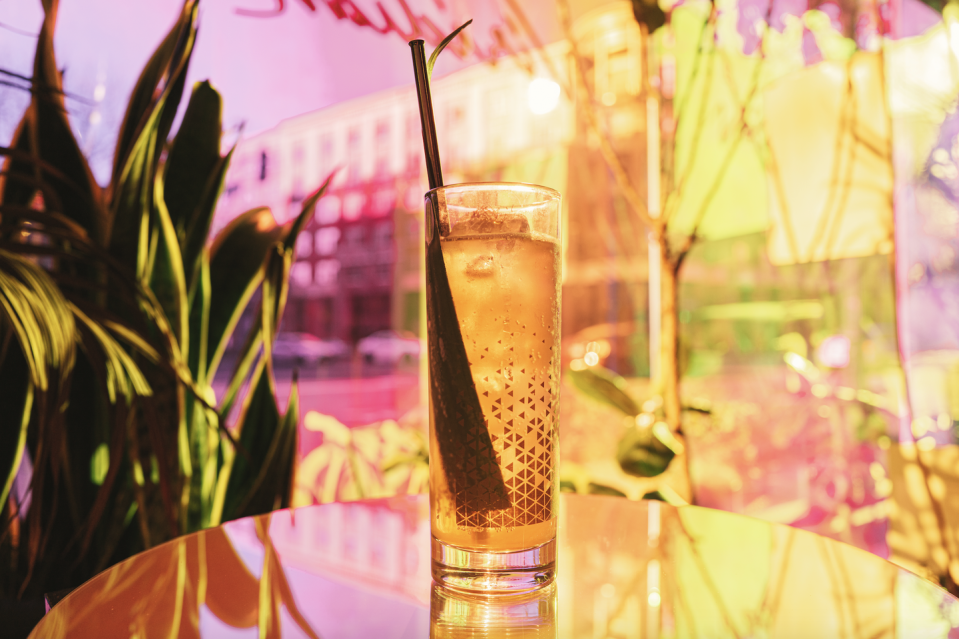
“This living out loud as Asian Americans really grew up alongside the pandemic,” says Jeff Yang, a co-author of Rise: A Pop History of Asian America from the Nineties to Now. “It’s a reaction, not just to the rise of violence, but also to slurs and the casual racism of the early pandemic, especially in restaurants and bars simply because food and drinks have been an interesting communications medium for cultural defiance over the decades. It’s easier to communicate a message over a drink instead of a book or a movie.”
Jenn Saesue, a co-owner at Fish Cheeks who has overseen its cocktail program, says of the pandemic: “It gives us more time to be with the community. I’ve met more of my peers during the pandemic than I ever have before.”
There's another silver lining to the Covid-19 era, thanks to all those mostly-white bartenders who got through lockdown by teaching online mixology classes. “If everyone can make a negroni at home now, it pushes the evolution of excitement about what going out can deliver,” says Ran Duan, a nationally recognized bartender in Boston. “It needs to go above and beyond with ingredients, flavor profiles, garnishes, presentation, everything, the total experience. Asian food has already infiltrated every restaurant. Look at Sriracha, lemongrass, Sichuan peppercorn, ponzu, sesame, tofu. It’s mainstream in a way that people are starting to crave the flavor profile that, sorry, margaritas and martinis just don’t have.”
That creativity is spilling over into true inventiveness thanks to the unprecedented presence of distinctly Asian booze. Two Vietnamese refugees in their fifties, Sui Dinh and Tien Ngo, for example, opened SuTi Craft Distillery in suburban Dallas in late 2020 as the only U.S. producer of rượu đế, a Vietnamese moonshine. “We have a mission now,” says Ngo. Dinh explains: “Connecting Vietnamese people to something they’ve only heard of from their parents or grandparents.” They’re aiming for nationwide distribution this year (as is a Filipino company’s debut of the world’s first ube cream liqueur).
Although supply chain chaos has compelled Saesue to substitute Sailor Jerry spiced rum for Fish Cheeks’ mekhong cocktail, she proudly serves ya dong, an herbal alcoholic concoction from rural Thailand similar to Dominican mamajuana. “Ya dong is old-school,” she says, “from older generations, rural, not upscale or trendy—but we think it’s very cool because it’s often homemade and everyone has their own recipe. To me, that’s culture with respect.”
Often, much of this nationwide inventiveness is equal parts courage in highlighting what Asian Americans take for granted. “It’s not about twists on classics,” says Katie Rue, owner of Reception, a soju bar in New York. “It’s about a whole new showcase: chrysanthemum, bergamot, lotus, Korean pear, Korean green plum, bokbunja, yumberry. People come and drink and now know what yuja honey is and how it’s different from yuzu. It teaches without hitting you over the head. We don’t have a huge exclamation point after every drink.”
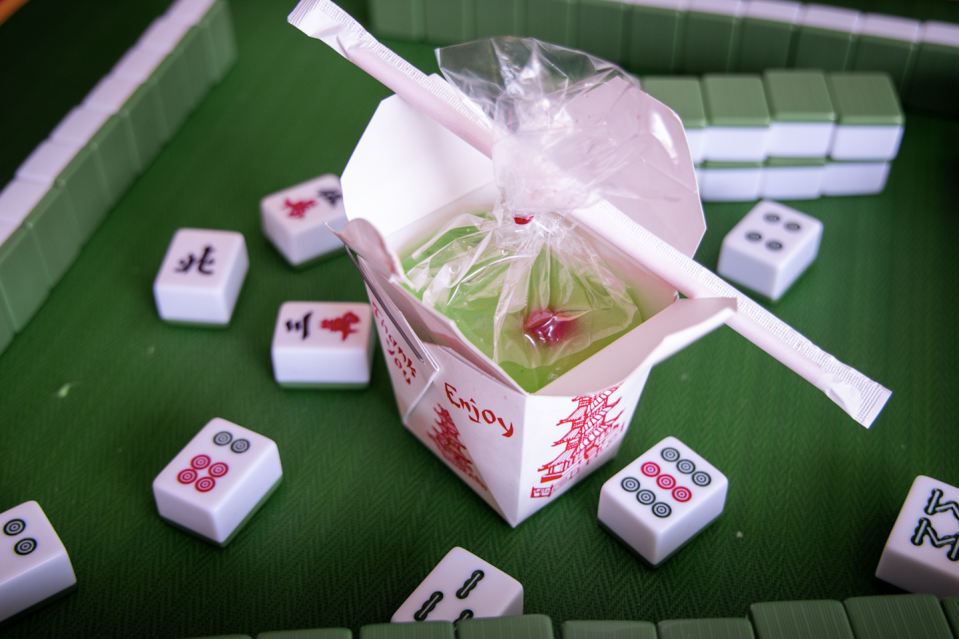
Ricky Agustin, a bartender in Seattle who steered his past as a Starbucks barista into mixology, has a pop sensibility about it: “It’s a really cool thing when culture bounces around across people and oceans. Look at rock n' roll: It bounces back and forth over the Atlantic and gets cooler every fucking time. It’s the same with cocktail culture across the Pacific.”
Of course, trending or mainstreaming marginalized culture is not without controversy or complexity. Tchen, for his part, counters with academic sobriety: “There’s some audacity here because Asian Americans are now seen broadly as cool for their new sensations, new sounds, new looks, new tastes—but the reason they’re ‘new’ is because they have been historically excluded from mainstream culture.”
Even well-intended descriptors like “authentic” navigate a difficult path of assumptions, expectations, and stereotypes, as Dean Moskones, a co-owner at Bar Chinois, notes. “How are you going to tell me that I, as a Filipino American, am appropriating or misappropriating Filipino culture when the country used to be an American colony?” he asks. “We are the definition of conquered people trying to find our way to fit in. Let us be. We eat with a fork and spoon. We have the Latin alphabet. We crave Spam. What’s enough? Just let us be.”
Intersecting all these topics is a debate about what exactly is meant by calling something or someone “Asian” in 21st-century America. The “busiest bartender” in San Francisco, Christian Suzuki-Orellana, for example, is Japanese and also Salvadoran. Raj Shukla, a bartender in Indiana who found a national spotlight for a turmeric cocktail inspired by his grandfather, a Hindu priest, is Indian and Dutch. Kapur is Chinese, Indian, and Native Hawaiian. Ferguson is Japanese and Irish—a heritage that was literally the stuff of ‘90s science fiction.
“If I make a kung pao chicken-inspired cocktail, that’s very interesting,” says Don Lee, America’s bar mentor of the year in 2020. “Is it Asian? Is it Asian because I’m Asian and I did it? Is it Asian because people think it’s Asian? It’s certainly not Asian in the sense that it comes from Asia. Then you take it to Asia and it’s weird there. It’s American. There’s a double not-fitting-in we’re fighting.”
Lee was an early voice of this renaissance, making his mark at Momofuku as the liquid equivalent to David Chang. “I did a lot of Asian-themed drinks when I worked at Momofuku because people thought it was an Asian restaurant and that’s what they wanted. People who knew would drink wine. Most people drank sake,” he says. “So I invented the Seven Spice Sour and it’s still the best-selling drink there. I made a kimchi Bloody Mary for brunch. It wasn’t necessarily smart or about identity. It was the market. When Applebee’s has a margarita special on Cinco de Mayo, we don’t blink an eye. So the mainstream question is: when will it not seem weird if they do a Lunar New Year thing?”
Tim Ma, a D.C. chef who co-created Chefs Stopping AAPI Hate, tilts optimist on these questions. “Our generation is leaning more towards celebration that’s not in banquet halls with Chinese people but in bars with everyone. It’s becoming a little more Cinco de Mayo, a little less Asian ancestry,” he says. “As a touchpoint for non-Asians to dive into the culture, that’s a good thing.”
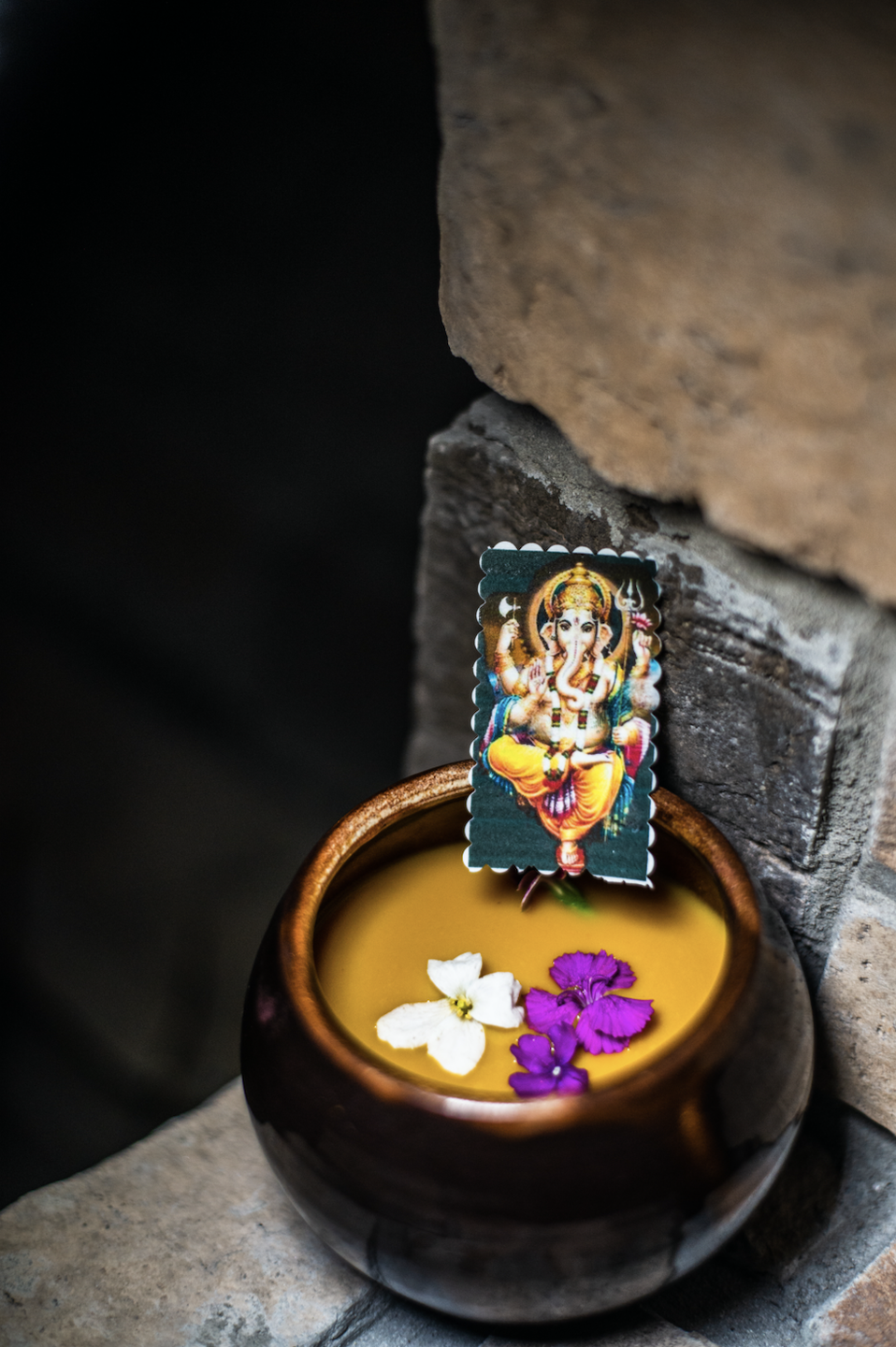
But not everyone is so upbeat. “It’s lonely,” says Shukla. “We don’t have the Aziz Ansari or the Mindy Kaling of mixology yet. But hopefully soon. Our moment has been coming and maybe it’s here now.” He flags a particularly personal frustration: that punch, a basic cocktail category, is ignored as an Indian creation (it derived its name from paanch, the Hindi word for five, for its five core ingredients: booze, citrus, sugar, tea, and water).
“There are so many Americans who care about Asian food but not the people or the culture behind it. It diminishes who we are as people,” says Suzuki-Orellana. “So hopefully with cocktails we can expand that conversation, or restart it — reboot it and rewrite it, really. We’ve been secondary and tokenized for a long time. But now is our time to stand up and be vocal.”
To get there, Lunar New Year will need creativity and inventiveness from white America, too. The track record there is unsurprisingly unflattering. “Many white residents who at other times united in saying 'the Chinese must go' find it convenient to invade Chinatown during the holidays and freely partake of Celestial hospitality,” wrote The San Francisco Call about 1892’s Lunar New Year, also flagging how much Chinese booze was being imported for the festival. “Some go further than this and try to carry off everything that is not nailed down."
In fairness, it was a time before mocktails.
You Might Also Like

